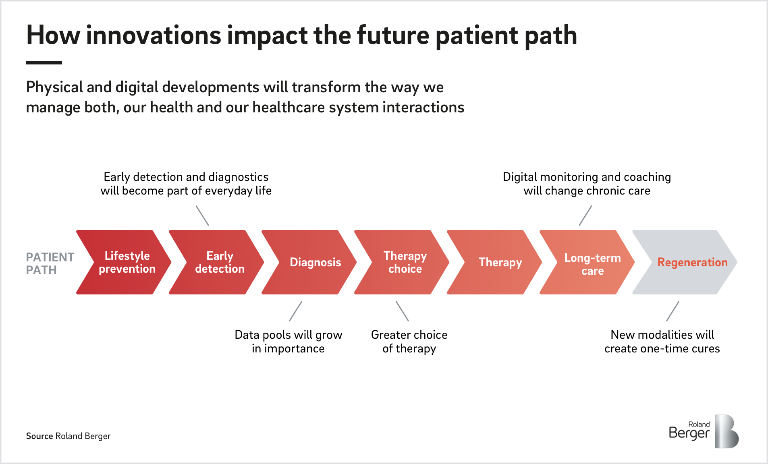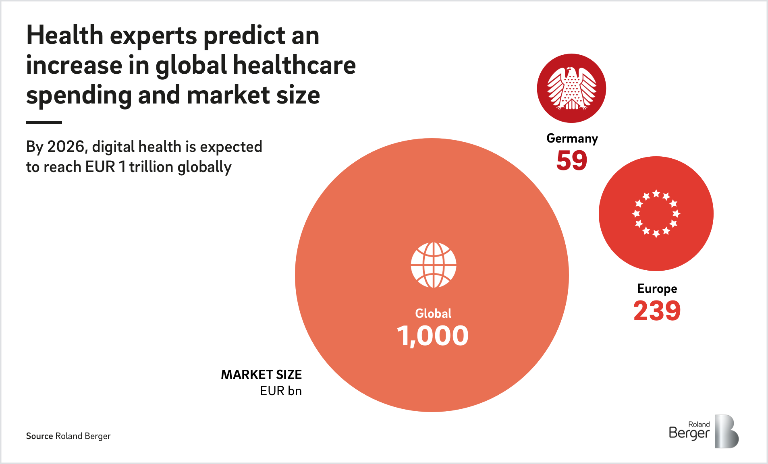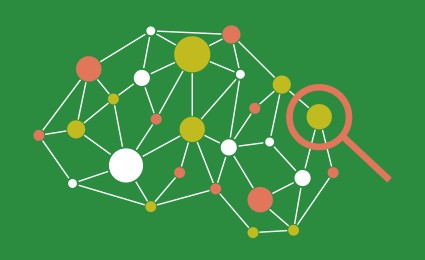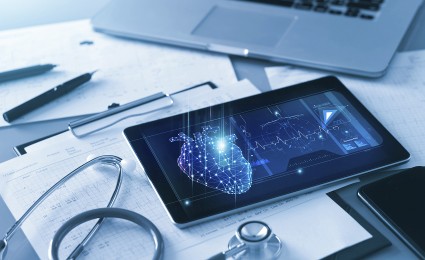Around 415,000 people are currently employed by startups and scaleups in Germany. If Germany succeeds in reaching the "level" of the USA - measured in terms of the percentage of total employment accounted for by startups and scaleups - this figure could rise to 3.7 million by 2030.


Future of health 3 - How the phygital model is going to transform healthcare
The convergence of physical and digital worlds means major changes across the healthcare sector
The blending of the physical (mechanical, electrical, biological and chemical innovations) and digital world (early detection, artificial intelligence, and so on)
Innovation is transforming the world of healthcare. While this is not news in itself – innovation has always been a driving force behind the evolution of healthcare markets – we are now witnessing a new dimension of change. Two worlds are coming together, the "physical" and the "digital", and their convergence is giving a powerful new boost to innovation. This has major consequences for the market, for healthcare players and for patient journeys. Our third "Future of health - Innovation boosted" study examines the shape of this impact and how players in the healthcare sector can best prepare themselves for change.
A new dimension of change
Four key factors drive this new dimension of change. First, breakthroughs in technology are revolutionizing medical practice before our very eyes, opening up a whole new world of possible therapies, such as mRNA vaccines and CGT ( cell and gene therapy ). Second, the digital world is becoming more mature, with many highly promising new approaches emerging in areas such as early detection, lifestyle change and therapy choice. Third, the physical and digital worlds are coming together and enabling many innovative solutions, as we discuss below. And fourth, the pace of technological developments is increasing, affecting not only digital innovations but also new biological and diagnostic technology, supported by an abundance of available capital.
Two worlds converge
To determine the impact of these changes on industry players, providers and payors, we surveyed more than 400 healthcare experts from around the globe. We backed up our findings with a series of one-to-one interviews and extensive desk research. Strikingly, we found that the spectrum of innovations is widening both in the "physical" world (in areas such as nanotechnology, robotics, miniaturization, biomaterials science, automation and connectivity within the medtech and device realm) and the " digital " world (health behavior change, early detection, the use of artificial intelligence (AI) in diagnostics and therapies, and so on). These two worlds are also increasingly coming together, resulting in innovations such as the parallel use of sensors and digital applications, biopsies and AI, and robotics/implants and digital applications. These new innovations are already having a tangible impact on the way we manage both our health and our interactions with the healthcare system, and will continue to do so in the future.
Digitalization in healthcare creates entirely new opportunities for better care, but it also requires more foresight and flexibility from all market participants.
The consequences of innovation
One potential consequence of the arrival of a wide range of digital and other innovations on the healthcare market is an increase in the rate of cost growth, driven by the use of new, more costly treatments, the introduction of innovations as add-ons to existing treatments, and increased awareness and early detection of diseases and conditions. At the same time, digital innovations will in part replace older, more traditional approaches, and some costs may be avoided altogether thanks to better prediction and more intelligent therapy choices. Similar effects could occur with physical innovations, with increased costs due to more treatments being needed as patients live longer, and at the same time decreased costs due to treatment no longer being necessary after patients are cured. Respondents in the survey were split as to whether ultimately the rate of cost growth will rise or fall – but many pointed out that financial limitations could act as an obstacle to innovation. Clearly, societies need to think about how they will cope with the higher cost of healthcare in exchange for better health overall.
Implications for healthcare players
This ongoing revolution in the healthcare system has serious implications for healthcare players. Different types of players will have different roles in driving the changes, and they should pursue different strategies accordingly. For example, industry players will continue to drive physical and digital innovations , while providers and payors will need to redefine their roles. Thinking in ecosystems and open innovations networks will be important for everyone. Today's world of innovation has become so complex and multifaceted that players will need to invest a great deal of effort in understanding what is going on and how it may affect the industry. Players of all types should therefore consider different scenarios in their planning and hone their ability to detect upcoming events and react to them in a versatile manner. In other words, players need to expect the unexpected.
Register now to download the full study to learn more about the current boost of digital innovations in the healthcare sector and get regular insights into our Pharma & Healthcare as well as Digital topics.



















_person_144.png)











